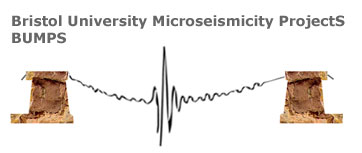Research Themes
The BUMPS consortium covers a range of research themes, covering the breadth of microseismic workflow. We begin with the acquisition of microseismic data, increasingly using novel forms of acquisition technology. We work on tools and methods to detect microseismic events, and to locate them in space and time. We invert microseismic data to recover detailed images of source rupture mechanisms, and use recorded waveforms to image the rock volume between sources and receivers. We use microseismic observations to make interpretations with respect to geomechanical processes occurring in the reservoir. Where microseismic events are not recorded, we use ambient noise methods to image the subsurface around and below monitoring arrays.
Microseismic Aquisition
Typically, microseismicity is recorded using geophones placed in, around and above target reservoirs. However, we are increasingly seeing the deployment of novel instrumentation to record passive seismic data. This includes the use of fibre-optic DAS arrays to provide coverage with unprecedented spatial density, and the use of "Raspberry Pi" instruments to provide extremely low-cost regional monitoring solutions.
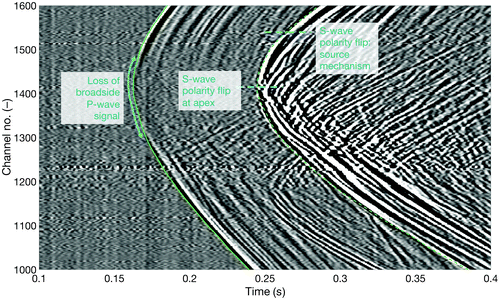
Example of a microseismic event detected using a DAS array, with key features of the incident P- and S-wave arrivals highlighted.
Microseismic Event Detection
Event detection is the first stage of any microseismic processing. Small-magnitude events with low signal-to-noise ratios must be identified in real time within large volumes of continuously-recorded data streams. Effective event detection can come at significant computational expense. We are working on machine learning methods to efficiently detect microseismicity at low magnitudes.
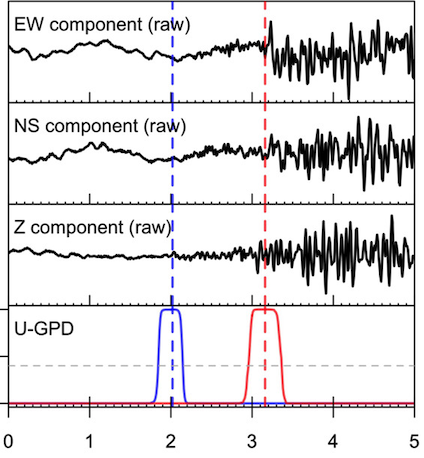
Example of an event detected and picked using machine learning. The upper traces show the raw seismic traces. The lowermost panel shows the probabilities of P- and S-phase arrivals determined by a machine learning algorithm.
Microseismic Event Location
Accurate source locations are crucial to any analysis of microseismic data. We work on techniques for improving source locations, including enhanced polarisation analysis, co-inversion with velocity models and co-inversion of both downhole and surface sensors. We also work on event detection/location methods using beam-forming and stacking methods.
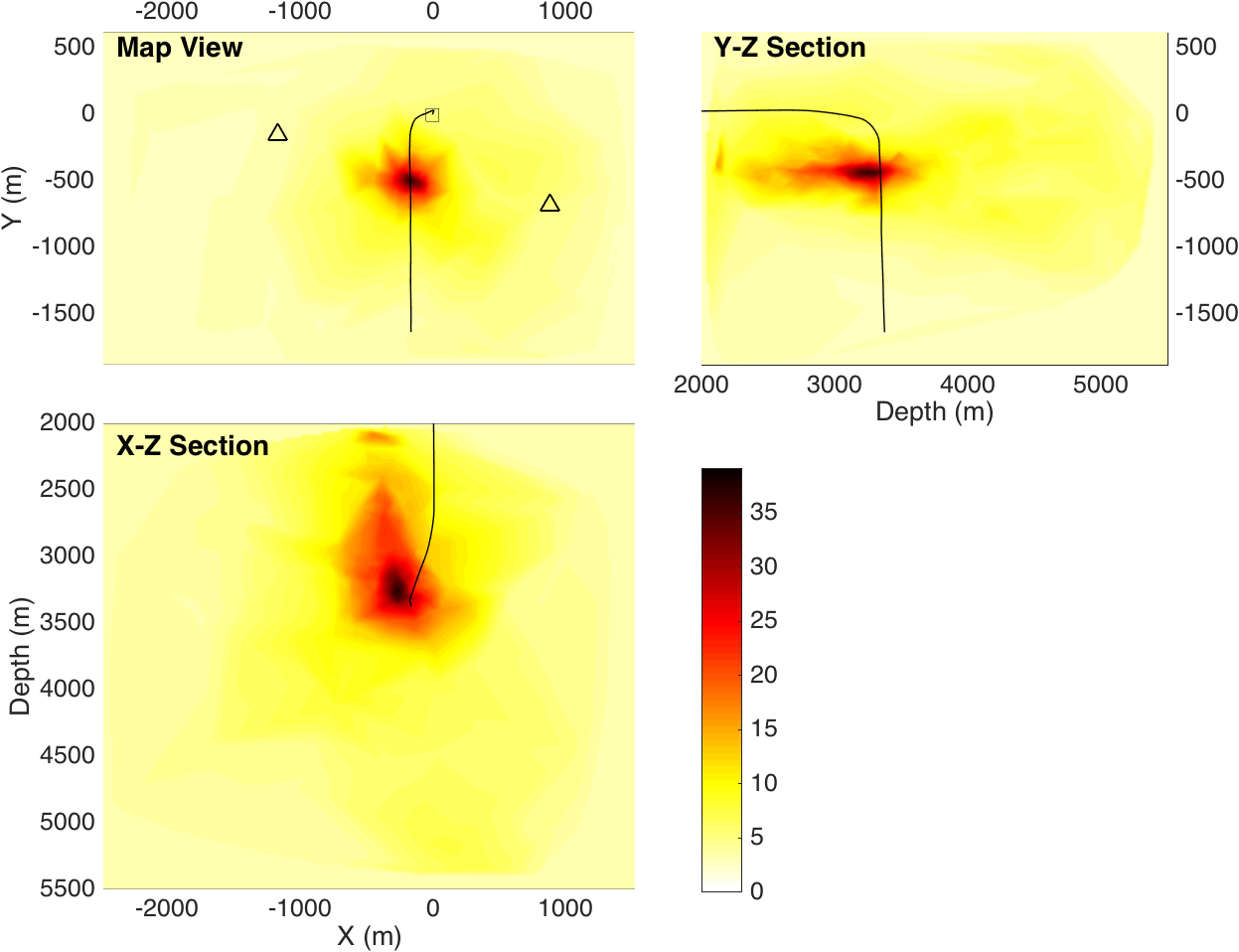
Example of an event located using beamforming. The plots show the stack power through the subsurface volume - the event is located where the stack power is maximised.
Microseismic Source Characterisation
Characterisation of microseismic event sources can provide vital information that can be used to understand the geomechanical processes that generate microseismicity. In particular, we are developing techniques to better image the dimensions of microseismic ruptures, the amount of stress they release, the orientations of rupture planes, and the directivity of slip across these planes.
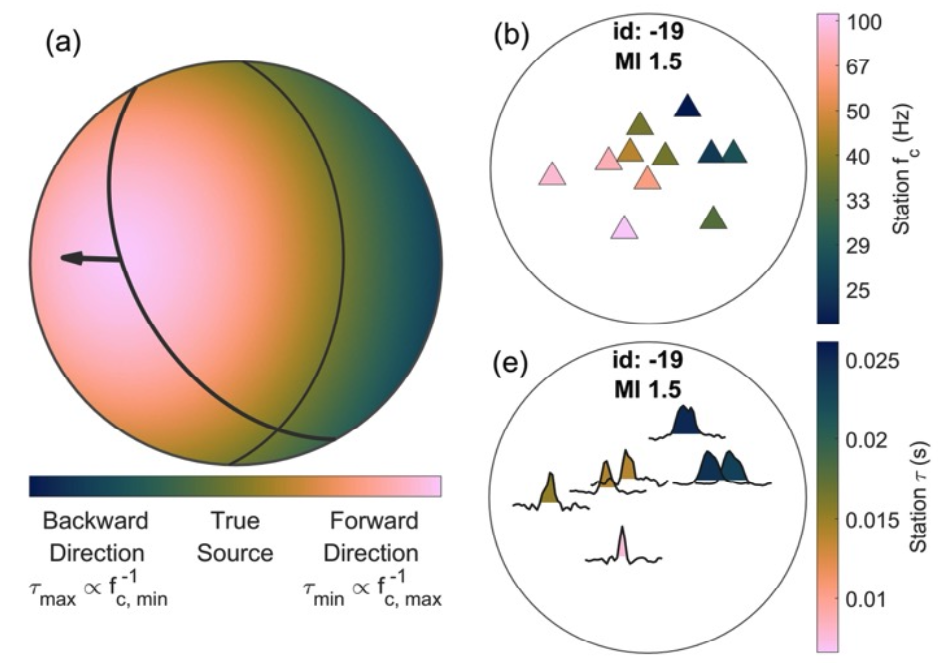
Example of a rupture directivity calculation - variations in corner frequencies for a single event are used to estimate the direction of earthquake rupture.
Microseismic as an Imaging Tool
Microseismic waveforms travel from their sources, which are in the reservoir, to receivers which are also placed in and around the reservoir. As such, their raypaths illuminate the rocks in and around the reservoir. This means that microseismic data can be used to image the physical properties of reservoirs. Our research encompasses a range of techniques for reservoir imaging, including: the measurement of seismic attenuation and seismic anisotropy; seismic tomography; and migration to image scatterers.
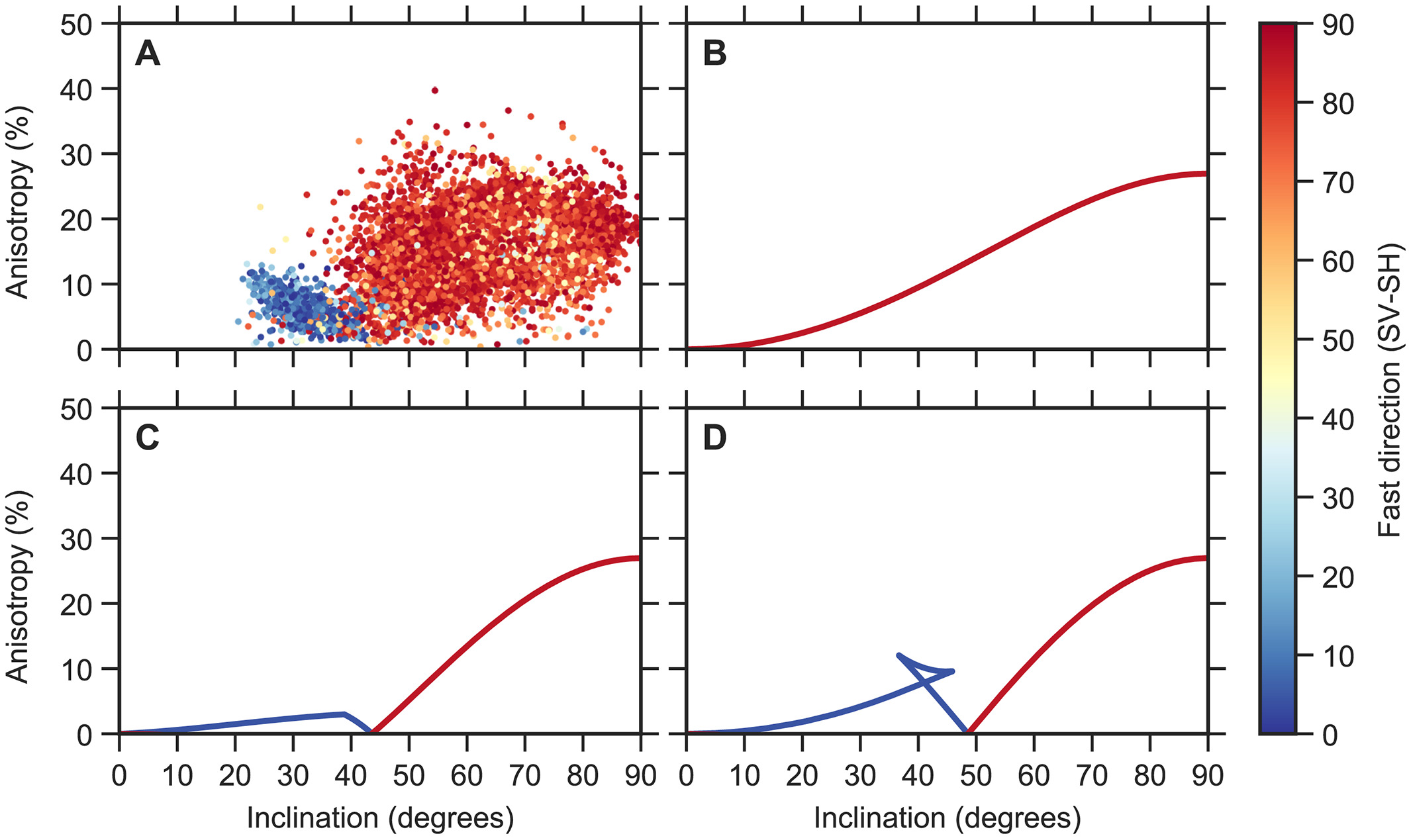
Shear-wave splitting observations used to image anisotropic rock fabric properties. The upper left panel shows observed SWS orientations as a function of inclination angle. Blue indicates SV waves are faster than SH, and red indicates SH is faster than SV. The other panels show modelled behaviour based on anisotropic rock physics modelling.
Microseismics and Geomechanics
Microseismicity is a physical manifestation of geomechanical processes occurring in the subsurface. Our research examines how observations of microseismicity can provide vital insights with which to constrain geomechanical models, and how we can use field-scale geomechanical models to better understand why microseismicity occurs when and where it does.
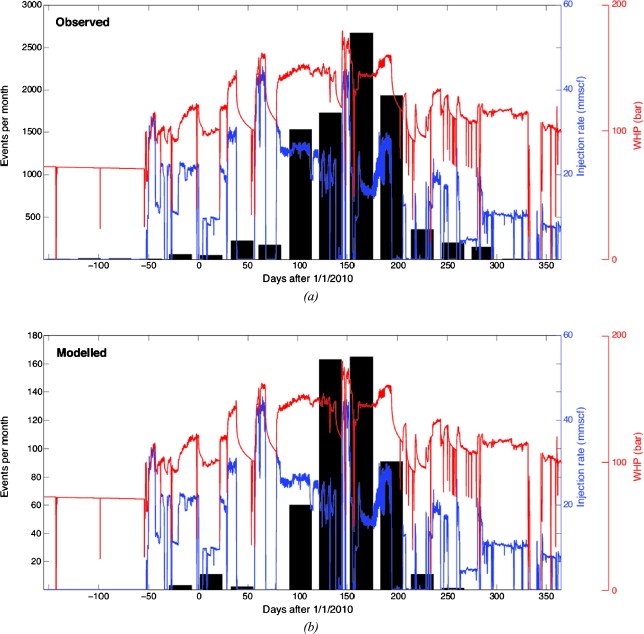
Results of a geomechanical model used to simulate the occurence of microseismicity at the In Salah CCS site. The upper panel shows the observed event rates (black bars, blue and red show CO2 injection rates and pressures), while the lower panel shows the simulated microseismicity rate.
Microseismics and Induced Seismicity
Induced seismicity is becoming a growing issue for a range of subsurface industries. Microseismic observations can provide crucial early-warning of the reactivation of tectonic faults, and help understand how injection programs can be changes to mitigate induced seismicity. Our research develops statistics-based models for forecasting the occurrence of induced seismicity.
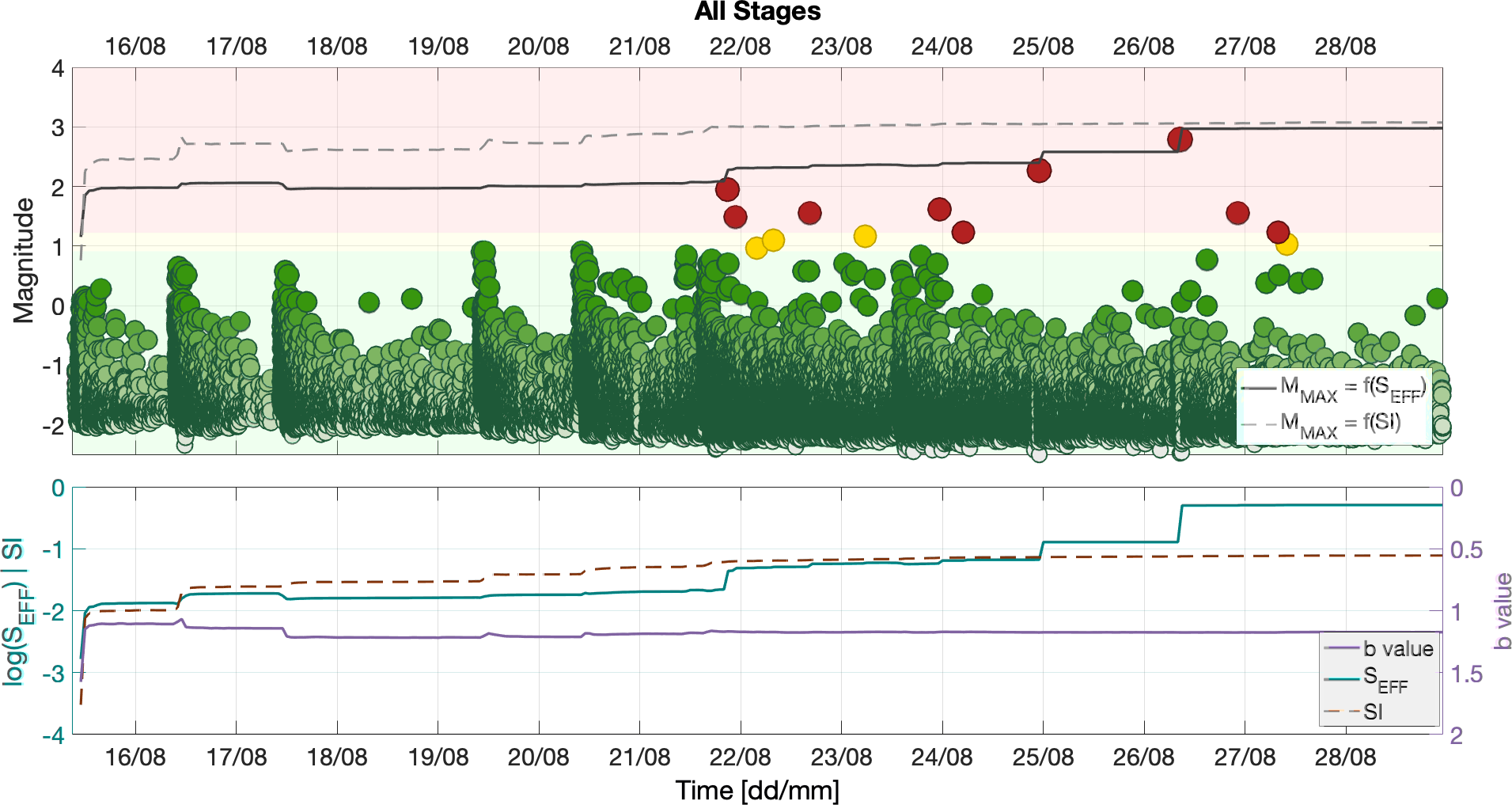
Results of maximum magnitude forecasting (solid and dashed lines in upper panel) during hydraulic fracturing at the Preston New Road PNR-2 well, Lancashire. The coloured dots show the observed seismicity.
Ambient Noise
Passive seismic data can still be extremely useful even when no microseismicity is recorded. Our research includes the development of techniques using ambient noise tomography to characterise the properties of the subsurface.
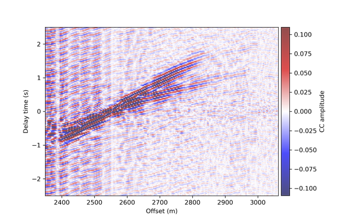
Example of ambient noise migration used to image the subsurface at the FRS CCS site, Alberta.
